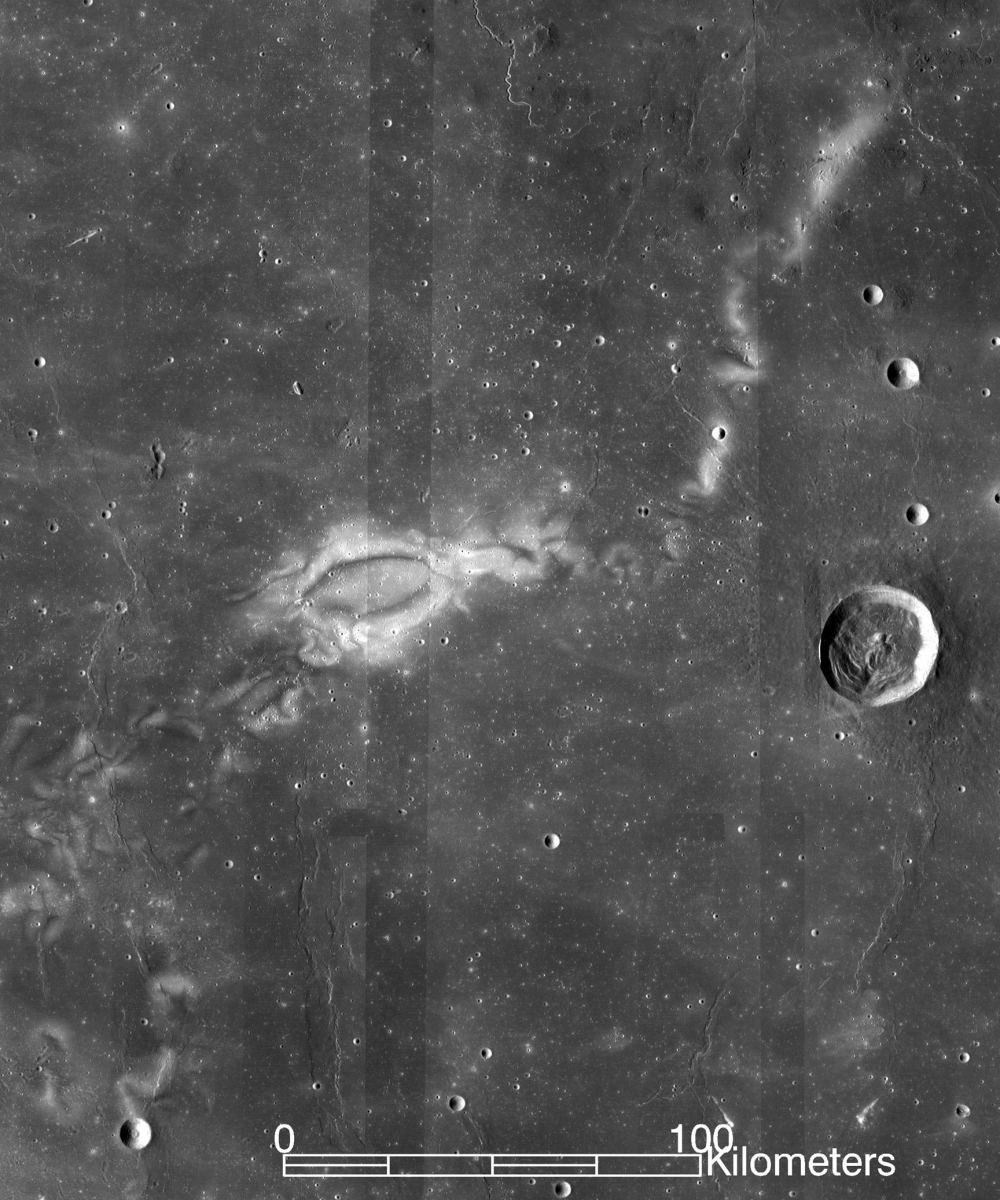
JULY 2, 2024 BY CAROLYN COLLINS PETERSEN
Collected at: https://www.universetoday.com/167646/mysterious-swirls-on-the-moon-could-be-explained-by-underground-magma/
In the latest chapter of “The Mystery of the Lunar Swirls,” planetary scientists have a new theory to explain these odd markings on the Moon’s surface. It invokes underground magmas and strange magnetic anomalies.
Lunar swirls are sinuous features that appear much lighter than the surrounding landscape. They extend for hundreds of kilometers and nobody’s quite sure why they exist. No astronaut has visited one of these weird regions, but that hasn’t stopped scientists from speculating based on images and magnetic field measurements. “Impacts could cause these types of magnetic anomalies,” said Michael J. Krawczynski, an associate professor of earth, environmental, and planetary sciences in Arts & Sciences at Washington University in St. Louis. Krawczynski points out that meteorites supply iron-rich material to areas on the Moon’s surface. However, these swirls exist in regions that aren’t necessarily disturbed by meteorites. So, what else could explain the swirls?
“Another theory is that you have lavas underground, cooling slowly in a magnetic field and creating the magnetic anomaly,” said Krawczynski, who, along with post-doctoral student Yuanyuan Liang, designed experiments to test this explanation. They measured the effects of different atmospheric chemistries and magmatic cooling rates on a mineral called ilmenite and found that under certain conditions, cooling subsurface lavas could be causing the ghostly lunar swirls.
Using Earth-based Geological Principles to Understand Lunar Swirls
Despite the fact that more than a dozen people have walked on the Moon, nobody visited a lunar swirl or picked up samples of their dust. That left Earth-bound planetary scientists to use Earth analogs for Moon rocks to understand lunar magnetism. “Earth rocks are very easily magnetized because they often have tiny bits of magnetite in them, which is a magnetic mineral,” Krawczynski said. “A lot of the terrestrial studies that have focused on things with magnetite are not applicable to the Moon, where you don’t have this hyper-magnetic mineral.”
So, the research team turned to ilmenite as their test material. It’s a titanium-oxide mineral with a weak magnetic signal. Ilmenite exists all over the Moon. It readily reacts to form magnetizable iron metal particles. “The smaller grains that we were working with seemed to create stronger magnetic fields because the surface area to volume ratio is larger for the smaller grains compared to the larger grains,” Liang said. “With more exposed surface area, it is easier for the smaller grains to undergo the reduction reaction.”

Interestingly, planetary scientists have seen a similar reaction creating iron metal in lunar meteorites in samples from the Apollo missions. The difference, however, is that those samples came from surface lava flows. Krawczynski and Liang’s study focused on the types of magma that cooled underground.
“Our analog experiments showed that at lunar conditions, we could create the magnetizable material that we needed. So, it’s plausible that these swirls are caused by subsurface magma,” said Krawczynski. “If you’re going to make magnetic anomalies by the methods we studied, then the underground magma needs to have high titanium.”
Why Study Swirls on the Moon?
Those mysterious dust patterns aren’t just there by accident. They contain clues to the processes that shaped the lunar surface. In addition, if magnetism is involved in their formation, that says something about magnetism on the Moon as a whole.
Until astronauts can get to the Moon to study these swirls for themselves, the ilmenite experiment offers a good way to test the underground magma idea from afar, according to Krawczynski. Of course, it would be nice to get actual samples of underground rocks on the Moon, but that’s going to have to wait. “If we could just drill down, we could see if this reaction was happening,” he said. “That would be great, but it’s not possible yet. Right now, we’re stuck with the surface.”

Studies like Krawczynski and Liang’s will be quite useful when NASA sends future lunar missions to the surface. There’s a whole rover project, part of a mission called Lunar Vertex, planned to study Reiner Gamma. That’s one of the Moon’s better-known swirls. Vertex should launch this year and is a predecessor to the larger return to the Moon NASA plans for later this decade. That mission could confirm whether or not swirls are magnetic field-related. If not, then there’s something else going on at Reiner Gamma and other swirl sites.
For More Information
Moon “Swirls” Could be Magnetized by Unseen Magmas
Possibility of Lunar Crustal Magmatism Producing Strong Crustal Magnetism
Lunar Vertex Mission

Leave a Reply